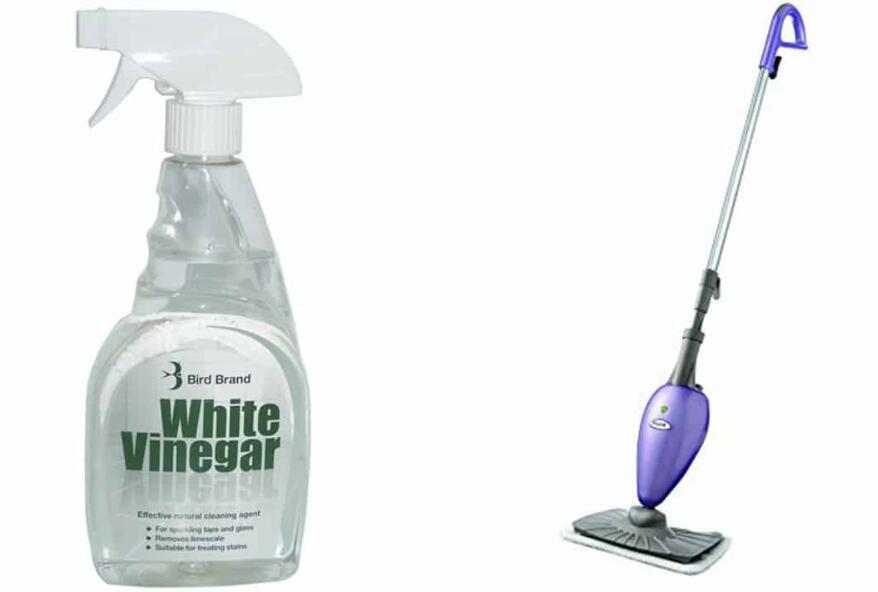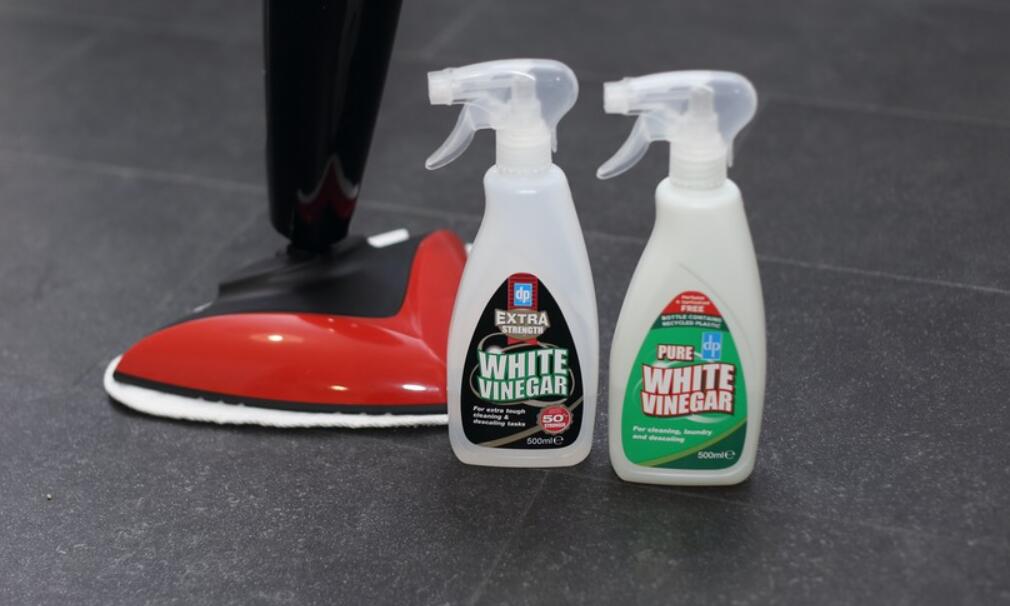Are you wondering whether you can put vinegar in your steam mop? The answer is yes. Steam mopping is one of the most effective methods of cleaning tile, linoleum, and vinyl floors.
This cleaning method offers both robust cleaning power and convenience. In most cases, using a mixture of soap and water in a steam floor mop provides adequate cleaning.
However, adding a few drops of vinegar to your steam mop can significantly improve the cleaning efficacy. Vinegar has a mild acidity, which aids in thorough cleaning and sanitizing of the floor. Continue reading as we enlighten you why and how you can use vinegar on a steam mop.
Can I Put Vinegar in My Steam Mop?
Yes. Placing a few drops of white vinegar on the steam mops water tank cannot harm your handy tool. Instead, it improves the cleaning power of your mop.
Vinegar contains acidic content making it helpful in disinfecting and killing germs and microbes from surfaces.
Therefore, adding a solution of vinegar to your steam mop will not only leave your flooring sparkling clean but also sanitized.
Benefits of Putting Vinegar in Your Steam Mop
Although steam mops are known for their cleaning ability, adding vinegar improves their effectiveness. Vinegar contains 4-7% of acetic acid, making it helpful in removing stubborn stains and killing germs.
You can use vinegar solution in steam mopping different surfaces, including floors, countertops, bathrooms, and toilets. Also, you can use it to clean your carpet. Here are some of the advantages you get by putting vinegar in a steam mop.
1. It helps to eliminate stubborn stains and buildups on surfaces.
One of the main benefits you get when you put vinegar on a steam mop is that it provides more enhanced cleaning of surfaces. Vinegar solution aids in the removal of grease and stubborn stains from flooring with ease.
Also, adding vinegar solution to your mop can help to eliminate buildup from a surface. Although it has acidic properties, vinegar is non-toxic and eco-friendly. Therefore, using vinegar solution to mop your floor leaves it spotless and flourishing.
2. It helps in dissolving soap scum and other stubborn things.
Another benefit of using a vinegar solution on a steam mop is that it helps in dissolving brines and soap scum left behind by hard water. It also dissolves other stubborn things from the floor, such as glue left behind by stickers.
Also, vinegar is superb in cleaning glass windows and mirrors. It leaves them extra shiny.
3. It gets rid of the odor.
Vinegar is also beneficial in the removal of foul odors. You can use your steam mop with vinegar solution to get rid of pet odor or other odors from your floor or carpet.
4. It is a great sanitizer and disinfectant.
Using a steam mop with vinegar solution increases its disinfecting power. The acidic properties of vinegar are excellent in sanitizing and disinfecting. Cleaning with it kills bacteria, germs, and other harmful things from your surfaces, ensuring you live in a healthy environment.
5. Vinegar is a natural cleaning agent.
Another benefit of using vinegar in a steam mop is that it is a natural cleaning agent rather than harsh chemical products that destroy your mop or floor. Furthermore, using a vinegar solution cleans and deodorizes your surfaces when you use a vinegar solution.
6. It is non-toxic and eco-friendly.
Vinegar is not a harmful product. It is non-toxic and eco-friendly. Therefore, when you use it in your steam mop, you don’t have to worry about the safety of your children and pets. The cleaning agent will not harm them.
7. It is affordable.
Vinegar is much more affordable than most cleaning agents. Using vinegar on a steam mop is a cheap and safe way of cleaning your floor.
How to Make a DIY Vinegar Solution to Put in Your Steam Mop?
Vinegar is an excellent element for cleaning and getting rid of germs. Furthermore, making a DIY vinegar solution is easy and will not take much of your time. Here is a step-by-step guide to follow if you wish to use a vinegar solution on your steam mop.
Step 1
In a mixing bowl, add two cups of (apple cider or white) vinegar, two cups of water, and two cups of rubbing alcohol.
Step 2
Then add two drops of mild dishwashing detergent to the mixture above
Step 3
Use a spoon to mix everything thoroughly and pour the mixture into your steam mop water tank.
Step 4
You can now start to clean using your steam mop and see the results.
While preparing the mixture, you should be careful about the amount of vinegar you put in. Avoid using a high concentration of vinegar, as it can destroy your steam mop. Always mix vinegar and water in a 50/50 ratio to ensure the solution is appropriately diluted.
When Should You Not Use Vinegar With a Steam Mop?
Although vinegar enables cleaning with less effort, that does not mean you should use it in cleaning everything. Here are situations when you should not use vinegar on a steam mop.
Do not use vinegar to clean stone or hardwood flooring. Hardwood floors have chemical finishing that can react with vinegar solution making them color or discolor.
Never use vinegar solution in cleaning marble and granite countertops. The acidic components in vinegar can scratch these surfaces.
Do not use a vinegar solution to clean egg stains because you may worsen the situation.
Conclusion
You can put vinegar on your steam mop to improve its efficacy. Vinegar is an effective cleaning and helpful agent in cleaning and disinfecting surfaces.
Also, it is a natural cleaning agent that is eco-friendly and non-toxic. Preparing a DIY vinegar solution is fast and straightforward. All that is necessary is to ensure you dilute the vinegar properly so that it cannot damage the mop and the floor.
However, you should note that you should never use vinegar in cleaning hardwood and stone floors. Also, vinegar damages granite and marble countertops. Use vinegar in your steam mop to keep your surfaces clean, fresh, and sanitized.


